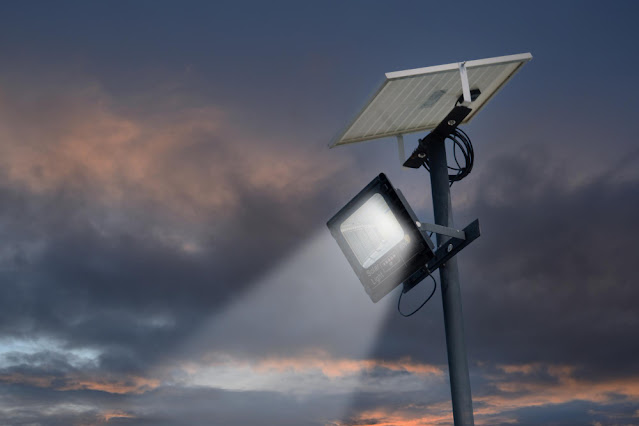How Do Daylighting Sensors and Daylight Control Sensors Work?
In smart building technologies, daylighting and control sensors are pivotal in optimizing energy efficiency and enhancing occupant comfort. As the push for sustainable practices gains momentum, these sensors offer a sophisticated solution to harness natural light effectively. In this blog, we will delve into the intricacies of daylighting and daylight control sensors, exploring how they function and contribute to creating more eco-friendly and intelligent building environments.
The Basics of Daylighting Sensors
Daylighting sensors are devices designed to measure the amount of natural light in a space. These sensors, often integrated into lighting control systems, enable artificial lighting automation based on daylight availability. Doing so helps reduce energy consumption and create a well-balanced lighting environment.
Principle of Operation
Daylighting sensors operate on the principle of measuring illuminance, which refers to the amount of visible light in a given area. The sensor detects the intensity of natural light and communicates this information to the lighting control system. This system then adjusts the artificial lighting levels, maintaining optimal illumination while minimizing energy usage.
Types of Daylighting Sensors
There are various types of daylighting sensors, each catering to specific needs and environments. Photocells, or photoelectric sensors, are commonly used to measure light levels. Open-loop and closed-loop sensors are other variants that differ in their approach to adjusting artificial lighting based on daylight conditions.
Integration with Lighting Systems
Daylighting sensors seamlessly integrate with lighting control systems, creating a responsive and energy-efficient lighting infrastructure. Modern designs often utilize advanced algorithms to ensure a smooth transition between natural and artificial light sources, adapting to changing daylight conditions throughout the day.
Understanding Daylight Control Sensors
While daylighting sensors focus on measuring natural light, daylight control sensors take it further by actively adjusting artificial lighting based on various parameters. These sensors contribute to a dynamic and adaptive lighting environment, further optimizing energy usage.
Dynamic Light Control
Daylight control sensors operate dynamically, continuously monitoring the natural light available in a space. They consider factors such as the sun's position, cloud cover, and the time of day to make real-time adjustments to artificial lighting levels. This ensures that spaces are consistently well-lit while minimizing unnecessary energy consumption.
Occupancy Sensing
Many daylight control sensors incorporate occupancy sensing technology, allowing them to discern whether a space is occupied. These sensors can make intelligent judgments about activating or reducing artificial lighting by integrating occupancy data with daylight measurements. This saves energy and improves user comfort by supplying the appropriate quantity of light when and where it is required.
Communication Protocols
Modern daylight control sensors often support standard communication protocols such as Bluetooth, Zigbee, or Wi-Fi to enhance connectivity and interoperability. This enables seamless integration with building automation systems, allowing for centralized control and monitoring.
Benefits of Daylighting Sensors and Daylight Control Sensors
Energy Efficiency and Cost Savings
The significant reduction in energy consumption is the prominent benefit of incorporating daylighting sensors and daylight control sensors. By optimizing artificial lighting based on natural light availability, these sensors contribute to lower electricity bills and a reduced carbon footprint.
Enhanced Occupant Well-Being
Natural light has been shown to improve occupant well-being and productivity. By ensuring that spaces are adequately lit with a combination of natural and artificial light, daylighting sensors and daylight control sensors create environments that are energy-efficient and conducive to occupant comfort and performance.
Compliance with Building Standards
Incorporating daylighting and control sensors aligns with various building standards and certifications focused on sustainability. This can enhance a building's market value and appeal while ensuring compliance with regulations promoting energy-efficient practices.
Challenges and Considerations
While daylighting and control sensors offer numerous advantages, addressing potential challenges and considerations in their implementation is essential. Issues such as sensor calibration, false triggers, and the need for periodic maintenance should be carefully considered to ensure optimal performance over time.
In conclusion, daylighting and control sensors represent cutting-edge solutions for creating energy-efficient and intelligent building environments. Integrating these sensors aligns with the growing emphasis on sustainability and provides tangible benefits such as cost savings, occupant well-being, and compliance with building standards. As we continue to strive for greener and smarter buildings, the role of daylighting sensors and daylight control sensors becomes increasingly crucial.
CR Control Systems, Inc. is at the forefront of developing innovative sensor technologies, contributing to the evolution of smart buildings and sustainable practices. Embracing these advancements makes ecological sense and sets the stage for a more efficient and comfortable future in building design and management.



Comments
Post a Comment